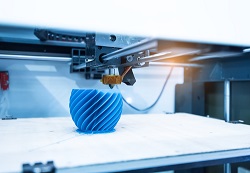3D printing: new file format released by ISO and ASTM
Published date: |
|
Modified date: |
|

As well as being used by hobbyists and inventors, 3D printing has applications in industries ranging from automotive to medical. It works by depositing material in layers, building up an object based on the plans in a file.
Published by the International Organization for Standardization (ISO), the new standard replaces the current stereolithography (STL) file format with the additive manufacturing file format (AMF) to address the current and future needs of additive manufacturing technology.
ISO/ASTM 52915, 'Specification for additive manufacturing file format (AMF) Version 1.2', specifies the requirements for the preparation, display and transmission for AMF. When prepared in a structured electronic format, strict adherence to an extensible mark-up language (XML) schema supports standards-compliant interoperability, ISO said. The document does not specify any explicit mechanisms for ensuring data integrity, electronic signatures and encryptions.
The specification was developed by experts in ISO's technical committee on additive manufacturing, ISO/TC 261, in partnership with ASTM International.
Committee Chair Dr Christian Seidel, Professor for Manufacturing Technologies and Additive Manufacturing, described some of the benefits of the new file format:
'The AMF format offers great potential to support the further development of the AM sector and will become increasingly important in the industry in the coming years. AMF describes an object in such a general way that any machine can build it to the best of its ability, and as such is technology independent.
'It is easy to implement and understand, scalable and has good performance. Crucially, it is both backwards compatible, allowing any existing STL file to be converted, and future compatible, allowing new features to be added as advances in technology warrant.'
> Go to Industrial industry homepage
Click here to provide feedback

